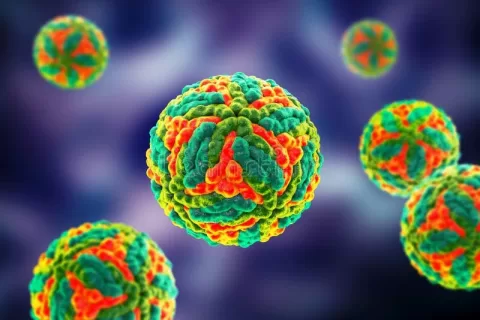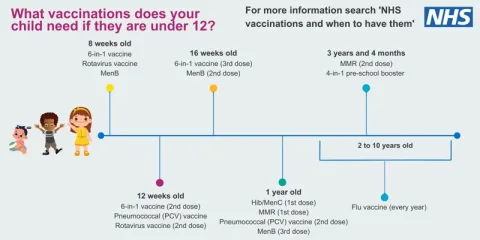Candida auris colonization has emerged as a pressing concern in healthcare facilities, particularly exacerbated during the COVID-19 pandemic. In Orange County, California, the incidence of this multidrug-resistant yeast surged dramatically, highlighting its impact on vulnerable populations, especially in long-term care settings. The accompanying rise in Candida auris transmission underscores the urgent need for effective infection control in hospitals and long-term acute-care hospitals (LTACHs). With rising antifungal resistance posing significant treatment challenges, understanding factors influencing colonization rates has never been more critical. This focus is especially vital as healthcare systems grapple with the ongoing repercussions of COVID-19 on patient safety and infection prevention.
The colonization of Candida auris, a concerning multidrug-resistant organism, has been a pivotal topic in recent infectious disease discussions. Particularly within the scope of the COVID-19 pandemic, the dynamics of this pathogen’s spread have become instrumental to comprehend, especially regarding its prevalence in clinical settings. As healthcare facilities face heightened risks of infections in long-term care, effective strategies for tackling C. auris transmission are crucial. The interplay between COVID-19 and the increased surveillance of colonization further underscores the importance of developing robust infection control protocols, especially given the challenge of antifungal resistance. Exploring these patterns aids in understanding the ongoing implications for patient care and safety during such public health crises.
Understanding Candida auris Colonization
Candida auris colonization is an increasing concern in healthcare settings, particularly in long-term acute-care hospitals (LTACHs). This organism, a multidrug-resistant yeast, was already recognized for its significant threat to immunocompromised patients when the COVID-19 pandemic began. The pandemic created conditions that heightened susceptibility to infections like C. auris due to the overwhelming strain on healthcare facilities, leading to compromised infection control practices. As facilities diverted resources to combat COVID-19, the window of opportunity for C. auris to establish itself among vulnerable patient populations expanded.
Recent studies indicate that patient colonization with C. auris surged during the early waves of the pandemic, especially as safety protocols and routine infection prevention measures were altered. Among patients undergoing lengthy stays, the risk of colonization was particularly pronounced, with studies reporting cumulative incidences exceeding 22% in certain periods. This highlights the need for rigorous surveillance and the implementation of practical infection control strategies to manage fungal colonization effectively.
The Impact of COVID-19 on Candida auris Transmission Dynamics
The COVID-19 pandemic significantly influenced Candida auris transmission dynamics within healthcare settings. Reports from Orange County show a marked increase in C. auris cases during the initial COVID-19 surge, indicating that the overwhelming focus on viral outbreaks led to lapses in monitoring and managing other healthcare-associated infections. These circumstances facilitated an environment where C. auris could thrive, especially in LTACHs, where patients often have complex health needs and a higher risk of exposure. The interplay between COVID-19 infections and C. auris transmission underscores the vulnerabilities within these healthcare systems.
Additionally, logistical challenges and resource redirection towards COVID-19 management likely worsened existing fungal infections. Hospitals and care facilities faced a dual battle with both viral and fungal infections, leading to a concerning rise in antifungal resistance as different pathogens became prevalent. This scenario necessitates a reevaluation of infection control protocols, ensuring that strategies are in place to manage Candida auris effectively even during times of heightened pressure from other infectious diseases.
Antifungal Resistance Concerns in Candida auris
One of the most alarming aspects of Candida auris is its propensity for antifungal resistance. This multidrug-resistant organism has shown resistance to several classes of antifungal medications, complicating treatment options for colonized and infected patients. With the rising incidences of C. auris during the COVID-19 pandemic, the pressure on healthcare facilities to treat resistant strains has dramatically increased. The limited effectiveness of existing antifungals heightens the challenge, emphasizing the importance of ongoing surveillance and research into new treatment modalities.
During the pandemic, instances of C. auris were exacerbated by the exclusion of routine fungal infection screening as attention shifted towards COVID-19. This neglect may have led to an unnoticed increase in antifungal resistance, as ongoing colonization without treatment could enhance mutation rates in resistant strains. Addressing this issue calls for urgent collaboration between healthcare providers and researchers to develop effective antifungal therapies that can mitigate the risks posed by these resilient pathogens.
Infection Control Strategies in Long-Term Care Facilities
Effective infection control measures are paramount in reducing the transmission of Candida auris within long-term care facilities, especially during public health emergencies like the COVID-19 pandemic. Facilities must prioritize stringent hygiene practices, including regular screening and isolation of colonized patients. Enhanced cleaning protocols, particularly in high-touch areas, are essential to mitigate any risk of C. auris spread. It is crucial for facilities to revisit and reinforce their infection control policies to ensure a consistent approach to preventing outbreaks.
Training staff on the latest infection prevention techniques is also vital. Education surrounding C. auris, its transmission routes, and appropriate handling of suspected cases can significantly lower transmission rates within these facilities. Furthermore, integrating infection control efforts into the broader emergency management plans can ensure that even in crisis situations, the risk related to multidrug-resistant organisms like C. auris is adequately addressed.
The Role of Surveillance in Managing Candida auris Risks
Surveillance plays a critical role in managing the risks associated with Candida auris in healthcare settings, particularly during periods of increased risk such as the COVID-19 pandemic. Regular point prevalence surveys help identify cases of colonization earlier, allowing for prompt implementation of infection control measures. In Orange County, the ongoing collection and analysis of data regarding C. auris cases have been instrumental in understanding its transmission patterns during the pandemic waves.
Establishing a robust surveillance framework not only assists in tracking the spread but also in evaluating the effectiveness of infection prevention strategies. The data obtained can inform healthcare policies and practices, ultimately aiming to minimize the risk of C. auris outbreaks. Continual emphasis on surveillance is essential, even beyond the pandemic, in maintaining public health and ensuring patient safety in healthcare environments.
Community Influence on Candida auris Prevalence
The community setting in Orange County significantly contributed to the dynamics of Candida auris colonization during the pandemic. As COVID-19 cases surged, the overall influx of patients with varying health conditions into healthcare facilities increased, which likely facilitated cross-contamination and heightened exposure to C. auris. Community-level factors, such as the prevalence of underlying health conditions, can influence infection vulnerability and the effectiveness of local infection control measures.
Moreover, the community’s response to COVID-19, including adherence to health guidelines and vaccination efforts, played a role in the overall healthcare environment. High community transmission rates can overwhelm local healthcare systems, diverting attention and resources away from routine infection management, including for C. auris. Thus, fostering community health and compliance can indirectly influence the management of fungal infections like C. auris.
COVID-19 and Its Effect on Infection Control Resources
The emergence of COVID-19 drastically altered the landscape of healthcare resources, including those required for effective infection control against Candida auris. Facilities concentrated their efforts on combating the viral pandemic, which led to a temporary reduction in resources allocated to managing fungal infections. This diversion emphasized the need for integrated approaches that accommodate multiple pathogens simultaneously, especially in long-term care settings.
As healthcare systems adapt post-pandemic, it is vital to reassess the allocation of resources to ensure they are adequate for combating both viral and fungal threats. Developing contingency plans that include training and resources for fungal infection control will be critical in preventing future outbreaks of C. auris as healthcare facilities continue to recover from the COVID-19 crisis.
Future Research Directions on Candida auris
Ongoing research is essential to address the challenges posed by Candida auris, particularly in light of its increasing incidence during the COVID-19 pandemic. Future studies should focus on understanding the genetic and phenotypic characteristics that contribute to its antifungal resistance and transmission dynamics. Insights gained from such research can inform better clinical practices and lead to the development of targeted therapies for managing C. auris infections.
Additionally, investigating the long-term impacts of the pandemic on antifungal resistance patterns and infection control practices is critical. Understanding how healthcare settings adapted and which practices were effective can provide valuable information for public health authorities aiming to prevent future C. auris outbreaks. Collaboration among researchers, clinicians, and public health officials will be pivotal in creating comprehensive strategies to combat this persistent threat.
Candida auris in the Context of COVID-19 Hospitalization
The interplay between Candida auris colonization and COVID-19 hospitalization presents unique challenges for infection control in healthcare settings. Patients admitted with COVID-19 often exhibit weakened immune systems, making them more susceptible to secondary infections, including those caused by multidrug-resistant organisms like C. auris. The presence of both respiratory viral infections and fungal colonization raises concerns regarding patient outcomes and overall infection management.
Moreover, the increased length of hospital stays for COVID-19 patients can concurrently heighten the risk of colonization with C. auris. Understanding how hospitalization for COVID-19 affects the likelihood of C. auris colonization will inform healthcare providers and lawmakers about the necessity of enhancing infection control measures in hospitals. As data emerges from the continual monitoring of these interactions, a clearer picture will develop regarding the management of fungal pathogens during health crises.
Frequently Asked Questions
What is Candida auris colonization and how does it relate to COVID-19 transmission?
Candida auris colonization refers to the presence of this multidrug-resistant yeast on the skin or in bodily fluids without causing infection. During the COVID-19 pandemic, particularly in long-term care facilities, transmission of C. auris increased due to factors such as overcrowding of patients, shared medical equipment, and diverted healthcare resources. Understanding this colonization is crucial as it can lead to outbreaks if not managed properly.
How did COVID-19 impact Candida auris colonization rates in healthcare settings?
The impact of COVID-19 on Candida auris colonization rates was significant, as seen in studies from places like Orange County, California, where colonization rates soared during the early stages of the pandemic. Factors like increased patient vulnerability and disruptions in infection control led to a cumulative incidence of 22.5% for new colonization, indicating a heightened risk of transmission during this period.
What are the implications of Candida auris colonization for long-term care facilities?
Candida auris colonization poses serious implications for long-term care facilities as it can escalate into infections among vulnerable populations. The surging transmission of C. auris during the COVID-19 pandemic highlighted the need for stringent infection control measures. Facilities must prioritize robust protocols to mitigate the risks associated with colonization and potential outbreaks.
What role does antifungal resistance play in Candida auris colonization?
Antifungal resistance is a critical concern with Candida auris colonization, as this yeast exhibits multidrug resistance, making infections challenging to treat. This resistance complicates the effective management of colonized patients and increases the risk of severe infections in healthcare settings, particularly ones already strained by the COVID-19 pandemic.
How can infection control practices reduce the transmission of Candida auris in hospitals?
Adhering to stringent infection control practices can significantly reduce the transmission of Candida auris in hospitals. This includes regular screening for colonization, strict adherence to hand hygiene guidelines, and proper use of personal protective equipment (PPE). The study indicated that after initial COVID-19 surges, the recovery of rigorous infection prevention strategies led to a decrease in new C. auris colonization rates.
What are the key measures to monitor Candida auris colonization during a public health emergency?
During a public health emergency like the COVID-19 pandemic, key measures to monitor Candida auris colonization include frequent surveillance through point prevalence surveys, admission screenings, and continuous staff training on infection control protocols. These strategies are vital for early detection and management of C. auris and preventing outbreaks in healthcare facilities.
| Key Point | Details |
|---|---|
| Significant Increase in C. auris Colonization | During the initial COVID-19 wave, the cumulative incidence reached 22.5% among patients after 30 days. |
| Epidemiological Study Design | The study analyzed swab specimens from 3 LTACHs between March 2019 and July 2022. |
| Variation in Incidence Over Time | The incidence of C. auris varied significantly across five periods, peaking during the second and third periods. |
| Impact of COVID-19 on Infection Control | COVID-19 management diverted resources away from C. auris prevention efforts, leading to increased risks. |
| Importance of Infection Prevention Protocols | Post-pandemic, effective infection control practices successfully reduced C. auris transmission. |
Summary
Candida auris colonization has become a significant concern in healthcare settings, especially during the early COVID-19 pandemic. This period saw a dramatic surge in colonization rates in long-term acute-care hospitals in Orange County, California. The study highlights that the initial wave of COVID-19 led to a cumulative incidence rate of 22.5%, indicating substantial risks for patients. However, as COVID-19 waves receded and stringent infection prevention and control measures were re-implemented, the incidence began to decline, emphasizing the necessity for continuous monitoring and robust infection control strategies. With ongoing surveillance, healthcare facilities can better manage and mitigate the threats posed by Candida auris.
The content provided on this blog (e.g., symptom descriptions, health tips, or general advice) is for informational purposes only and is not a substitute for professional medical advice, diagnosis, or treatment. Always seek the guidance of your physician or other qualified healthcare provider with any questions you may have regarding a medical condition. Never disregard professional medical advice or delay seeking it because of something you have read on this website. If you believe you may have a medical emergency, call your doctor or emergency services immediately. Reliance on any information provided by this blog is solely at your own risk.








